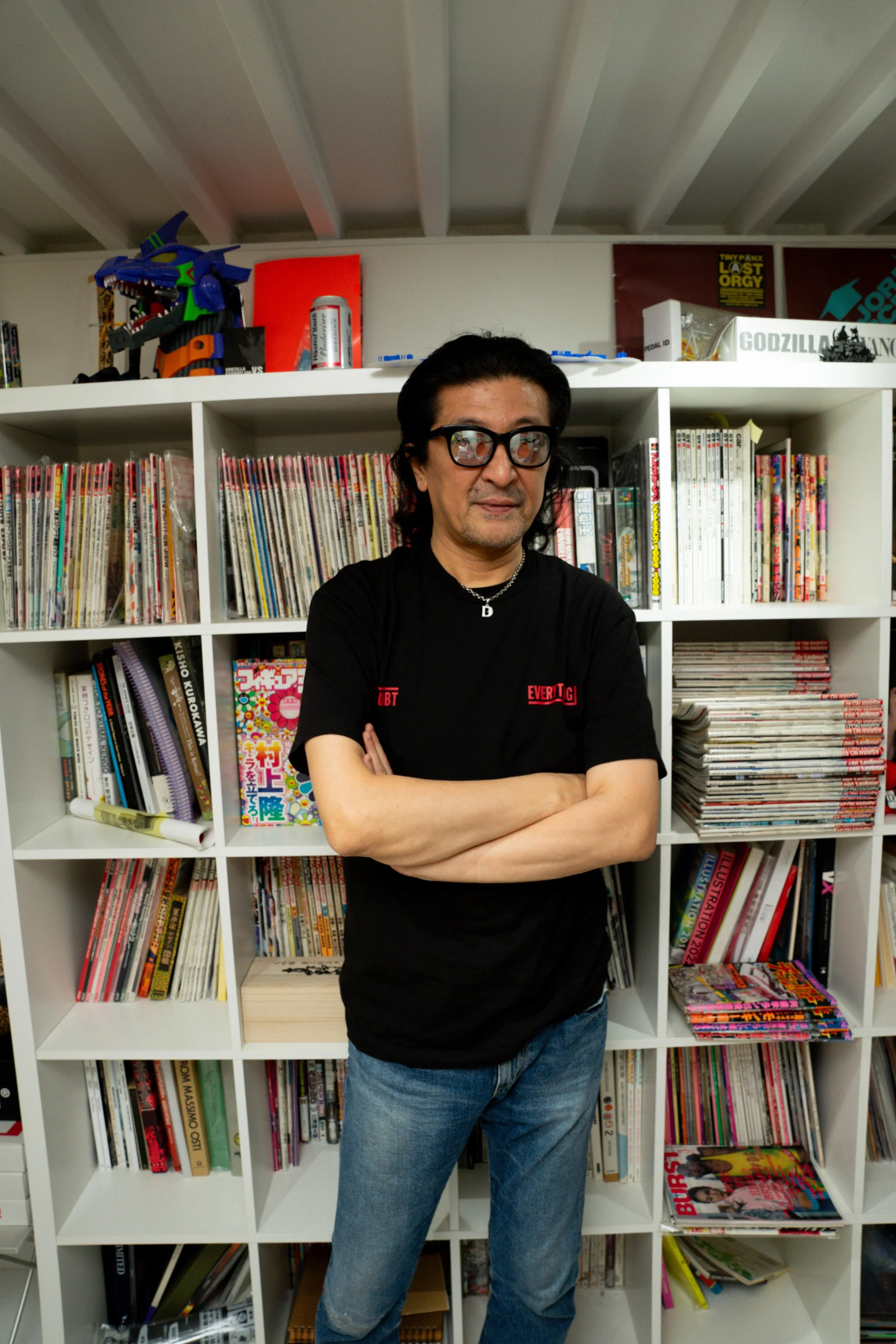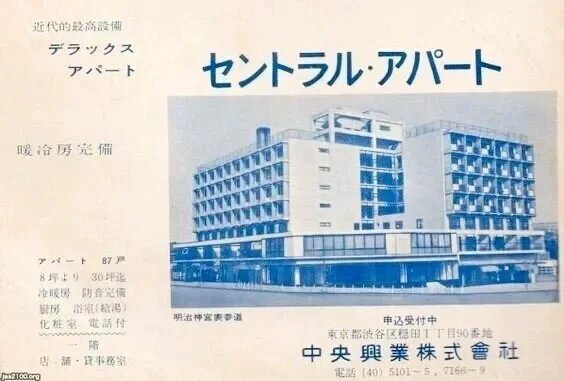Detz Matsuda: Chronicler of Urahara and the Legacy of Goro’s

Detz Matsuda, the often-overlooked hero of Harajuku’s Urahara movement in the late 90s, continues to shape Japanese street culture through his visionary projects. As president of doubteverything co., ltd., Matsuda has been at the center of art, fashion, and cultural documentation, collaborating with key figures like Hiroshi Fujiwara and Kan Takagi to capture the essence of Tokyo’s evolving streets.
Photo(s) taken by IFUCKTOKYO
His previous book, T90s, released in collaboration with Weber and Nomad Secondhand Clothes Store, documented 90s street culture with hundreds of vintage t-shirts and collections from cultural icons such as Hiroshi Fujiwara, Sk8thing, YOPPY, Matt Takei, and Matsuda himself. The book remains a definitive snapshot of Harajuku’s formative years, chronicling the styles, brands, and personalities that shaped a generation.
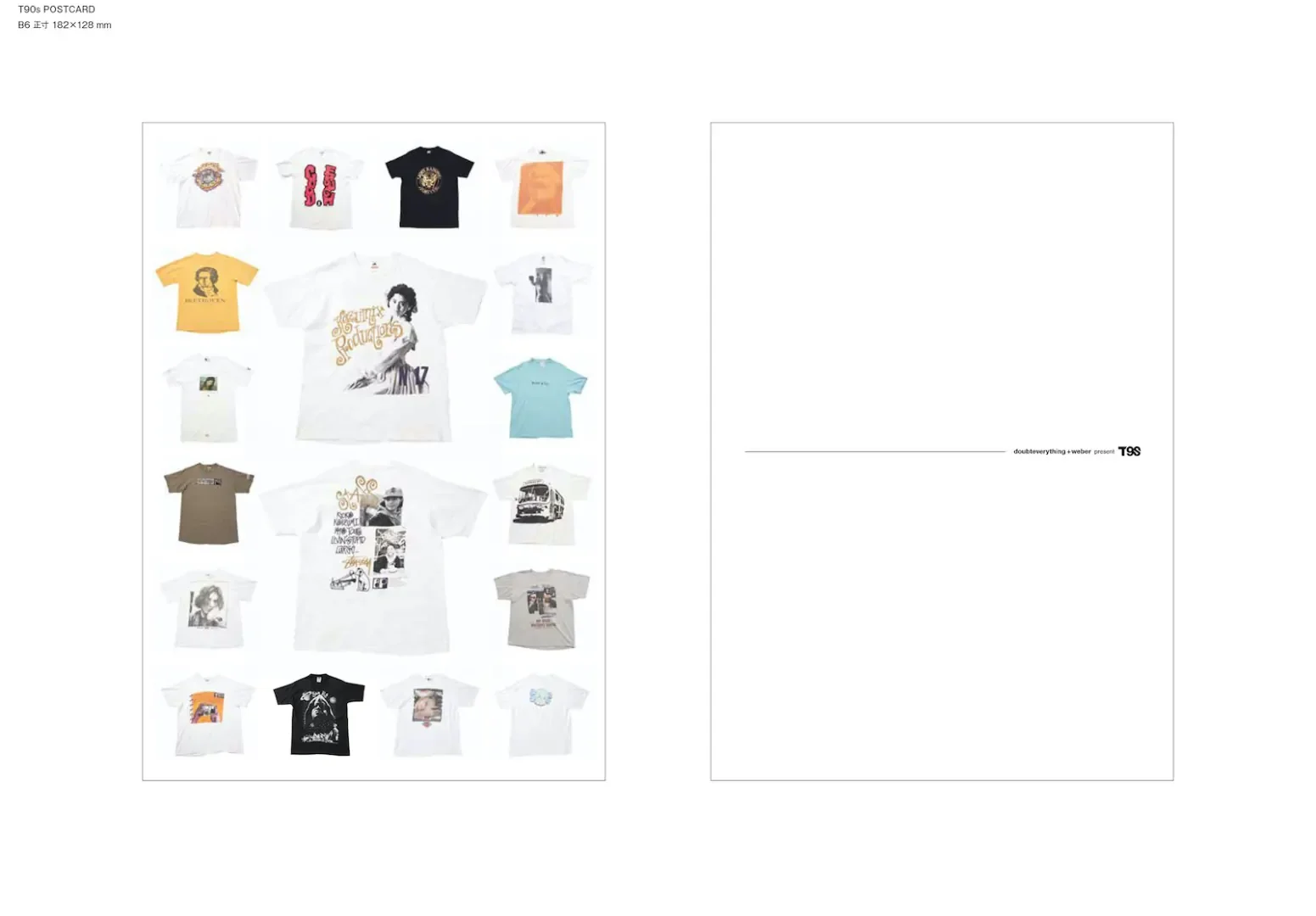
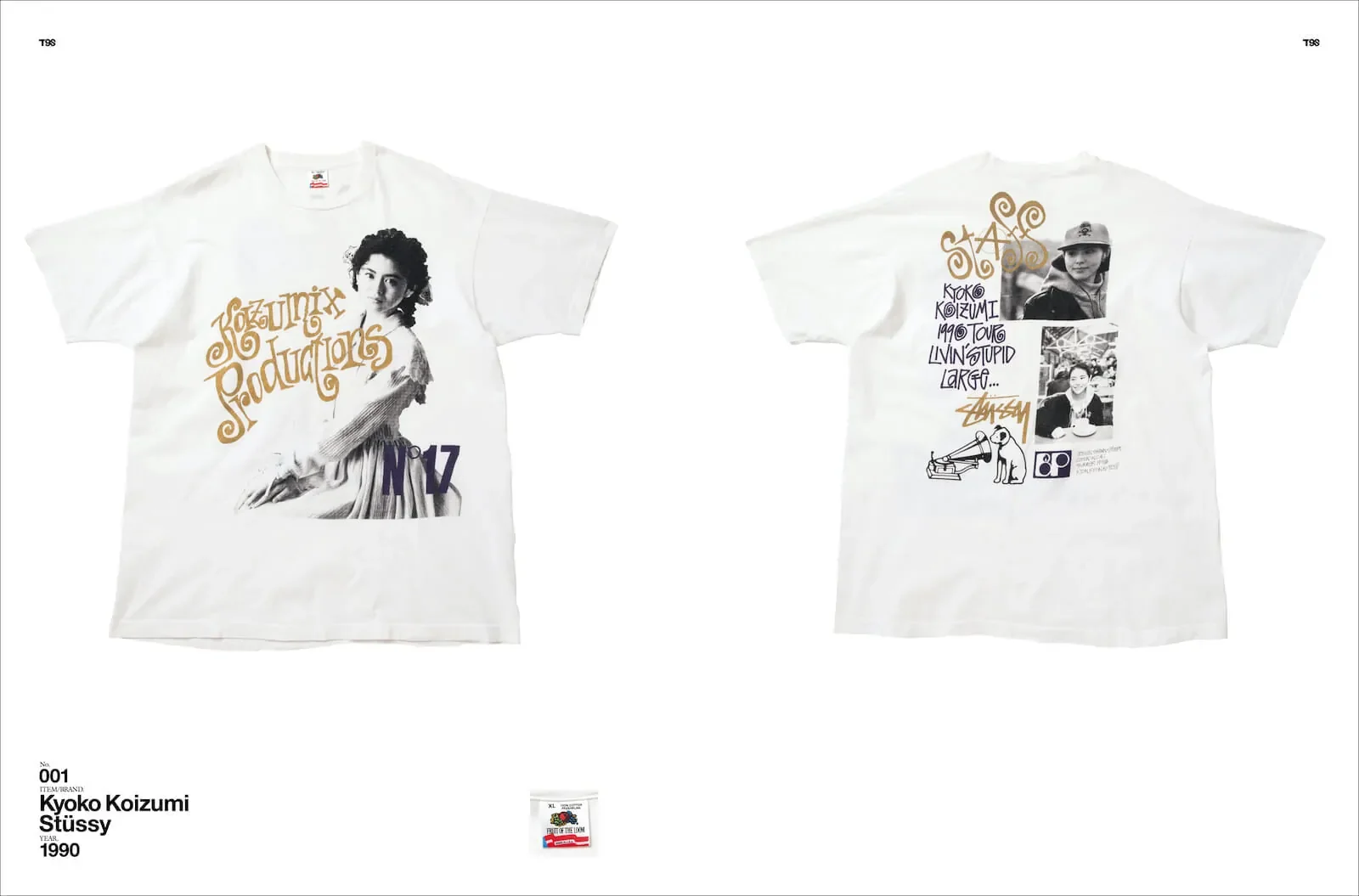

Now, Matsuda elevates his archival work with the release of The Heritage / goro’s, a luxurious limited-edition book available in only 560 sets. Released through Doubt Everything this fall, the book is a true collector’s item.
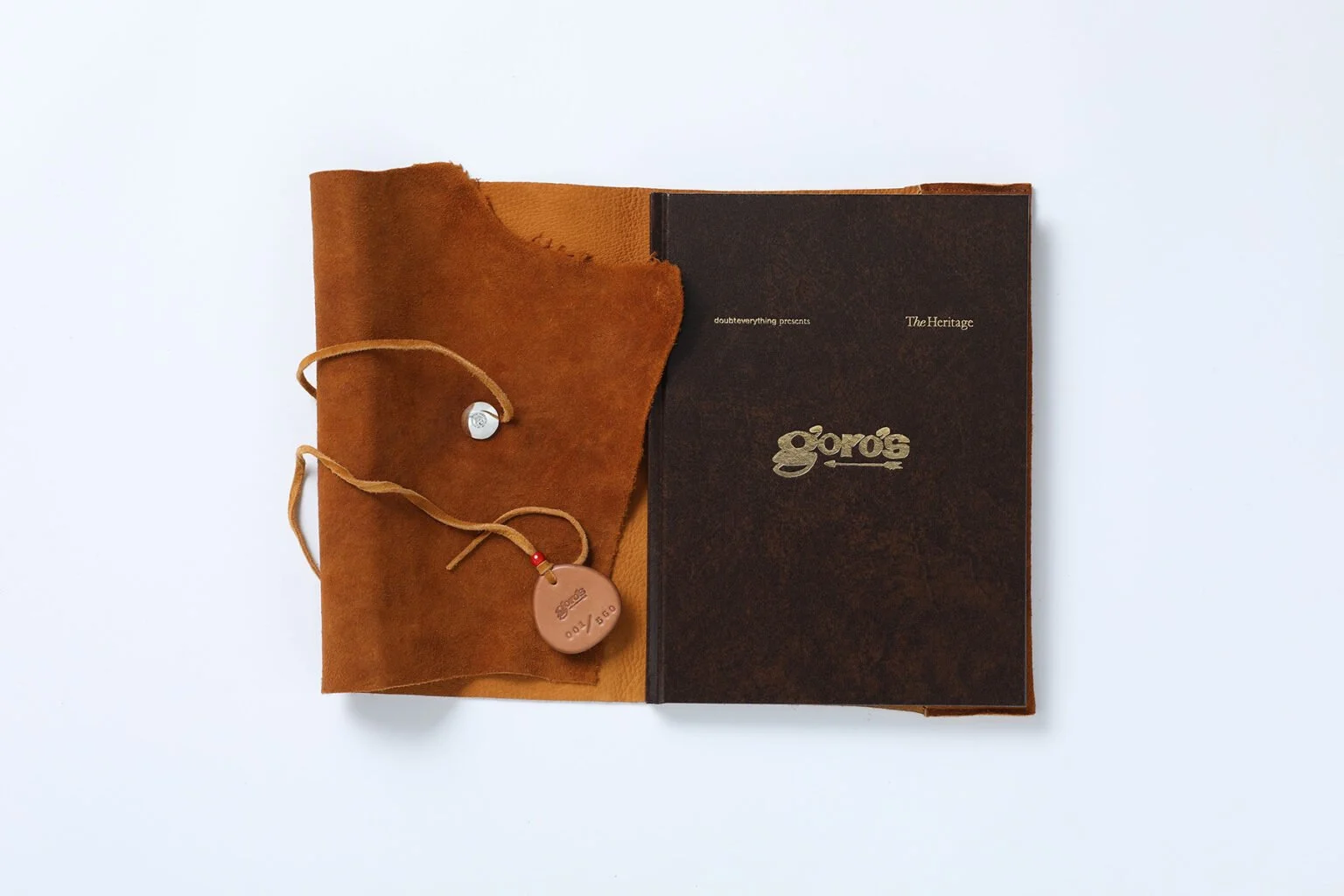



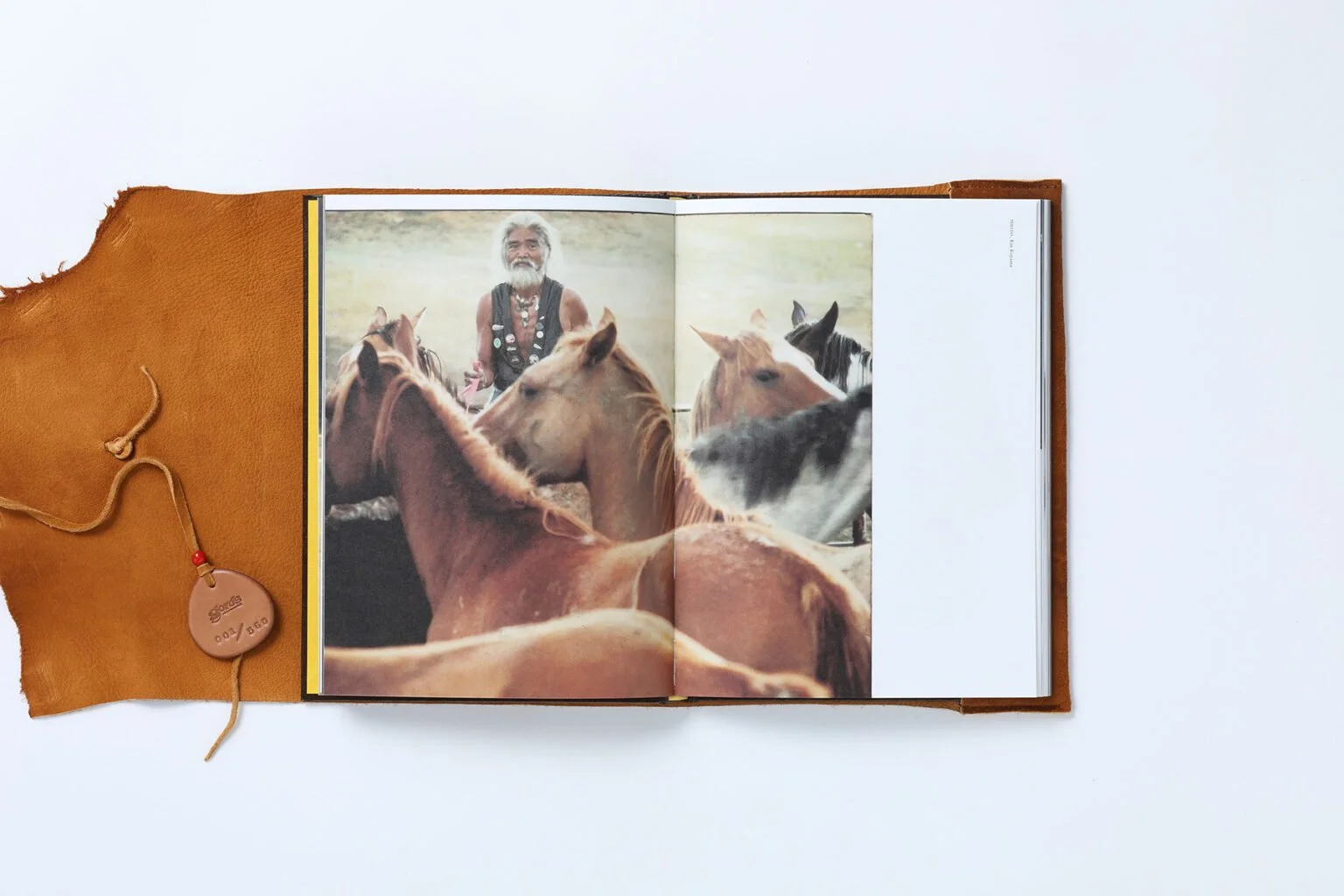


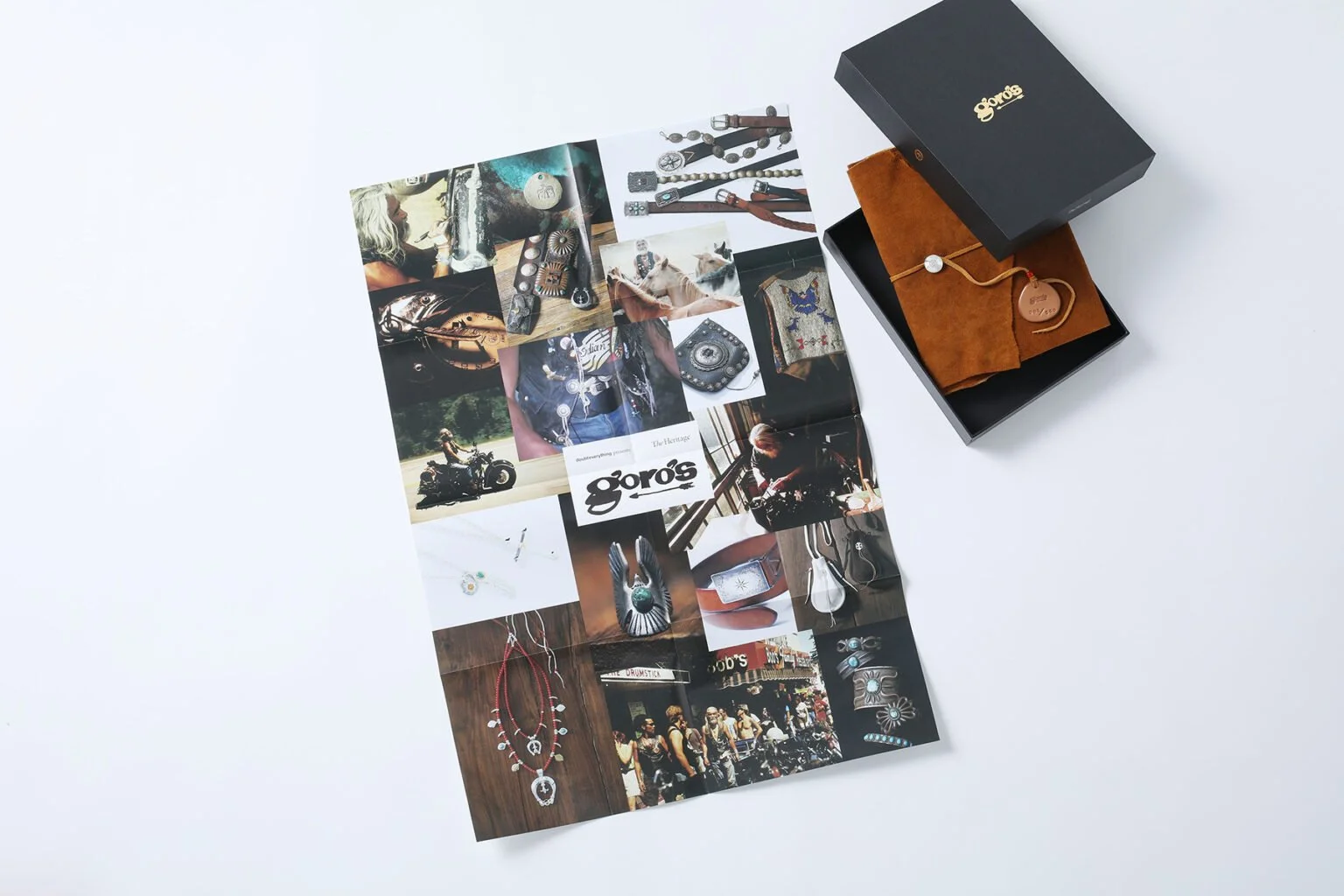

His collaboration with Fujiwara also extended to the brand GOODENOUGH, which was pivotal in defining 90s Harajuku fashion. An accomplished editor, Matsuda contributed to several Japanese street fashion magazines and penned a monthly column, "Dead End," with Toru-eye in the 90s youth culture magazine ASAYAN, where they traveled in search of cool items. Matsuda also sat down with sabukaru for an exclusive interview, where readers can learn more about his work and his lasting impact on street culture.
When it comes to Urahara-culture, most people tend to think of Hiroshi Fujiwara and Nigo, but us Sabukaru like to dig deeper so we're here today with Detz Matsuda-san. For people who aren't familiar with Detz Matsuda-san, could you introduce yourself please?
First of all when people ask me what I do, I'd say I am an editor. Although I do stuff besides editing, originally I've been working as an editor and started doing side gigs in late 80's; radio hosting, TV screenwriting and also appearing on those programs as a guest, as well. The mainstream was magazine and from the 90's I created ASAYAN, then HUGE, and then became independent, as of now.
I started a magazine Outstanding as a platform but after COVID we struggled to get ads so we kept the digital platform and kept it minimal, and started from featuring Tiny Panx, Tshirts and such. Overall, I would call myself an editor.
Scan(s) provided by Abe Selassie
Can you tell us a little bit more about Harajuku?
When we were young, we all used to listen to Kayou-kyoku (Japanese Pop songs in Showa-era) but after that, the senpais around me were mostly rebel/punk kids who listened to this band called CAROL (the band Eikichi Yazawa used to be part of), which led me to be influenced by the Yanki (Japanese delinquent youth) culturem where kids wore leather jacket, had a certain hairstyle, and rode motorcycles.
In those days when information was not readily available and the source of information was print media, what kind of magazines did you read?
Music magazines, Men's Club in the 70's, Popeye in 77-78. I read Popeye in high school. I also read magazines that focused on rock music. I would go to the bookstore several times a week and either buy or browse.
Harajuku to Urahara, there was onece an iconic building which you metntioned before?
The current Tokyu Plaza used to be a building called Central Apartment, where famous photographers and stylists used to live and work in the early 1980s. In the basement used to be clothing stores and restaurants. I was young then, but I did have a chance to visit a famous photographer’s office once.
The ground floor and basement were frequented by young people, while the upper floors were for the big names. In the neighborhood here was a famous coffee shop called "Milk" and "Leon" where creators had tea, and the Dojun-kai apartment building, which also had various stores.
In the basement of the Central Apartment, there was To-Lin, a store that was related to Akafuji (a store on Takeshita-dori that used to carry Seditionaries and Vivian that Hiroshi and Kan-chan used to go to), a heavy metal store, and a cafe. It was a spot where you always go first in Harajuku. In the upper-floor, people older than us, now over 70 years old, had their offices.
What are some Places people used to hangout?
I came to Tokyo in 1980. There was an outdoor cafe called Cafe de Rope (run by Jun) in the area which was a hip place to be in back then, with an outdoor area to hangout.
In 1982, there used to be a cafe called London Dreaming, as well. Also, a shop called A store Robot, where everyone used to go to, originally called Gokurakucho in the 70's. Around the same time, there was a shop called Dept on Meiji Street that mainly sold American vintage clothing. There were restaurants and shops where you can hangout in the evening, meet people there, and become friends.
In 1979, I also went to Laforet. PARCO was also around. At the time, the DC boom (D.C. short for Designer’s and Character’s) was in full swing, with Takeo Kikuchi, MONSIEUR NICOLE, and so on, at the height of their popularity. I was interested in those and also liked street style. I was interested in both. I mainly bought street style clothing though.
Scan(s) provided by Abe Selassie
Regarding GOODENOUGH, I was not a founding member in terms of management, I was just there to create things together and come up with ideas. Where should I start, from Hiroshi Fujiwara or from GOODENOUGH? Originally, Hiroshi and I were two years apart in age, grew up in the same town, and our childhood homes were in the same neighborhood. Our parents knew each other. I was two years older than him, so I knew of him, but had never talked to him, until we started talking when he joined high school, and we became friends. I moved to Tokyo, and two years later he moved to Tokyo, as well, and we started to hang out.
In the mid-80s, skating saw a boom in popularity (historically speaking, the second boom), and Hiroshi was on his way back from London with a skateboard. I asked why he had a skateboard with him and he said “this is the new thing”, so I got a skateboard, too. Then I was introduced to a skater that went by Sukeshin (SKATE THING) through Hiroshi, and from there, I became friends with Sukeshin, and skating really took off in popularity in Japan.
Photo(s) taken by IFUCKTOKYO
Stüssy became popular a little later. I think it was Hiroshi who popularized Stüssy in Japan. We used to go all the way to Shizuoka-prefecture to buy Stüssy. We were on the hunt to find Stüssy. Back in the 90's, Hiroshi and Sukeshin uttered, what Stüssy was doing could be done in Japan, too, and they wanted to do it their way, which I believed led to GOODENOUGH being born.
They were working in a small apartment in Ebisu with Shin-chan's handwritten round letters and graphics. We printed t-shirts and vinyl records in the middle of the night for fun. I didn't get any money, and I was just there having fun with my friends. At that time, we didn’t have computers or Macs, so we copied, enlarged, and came up with designs. It was too expensive to buy a Mac, but later on they bought a one with the money they made from GOODENOUGH
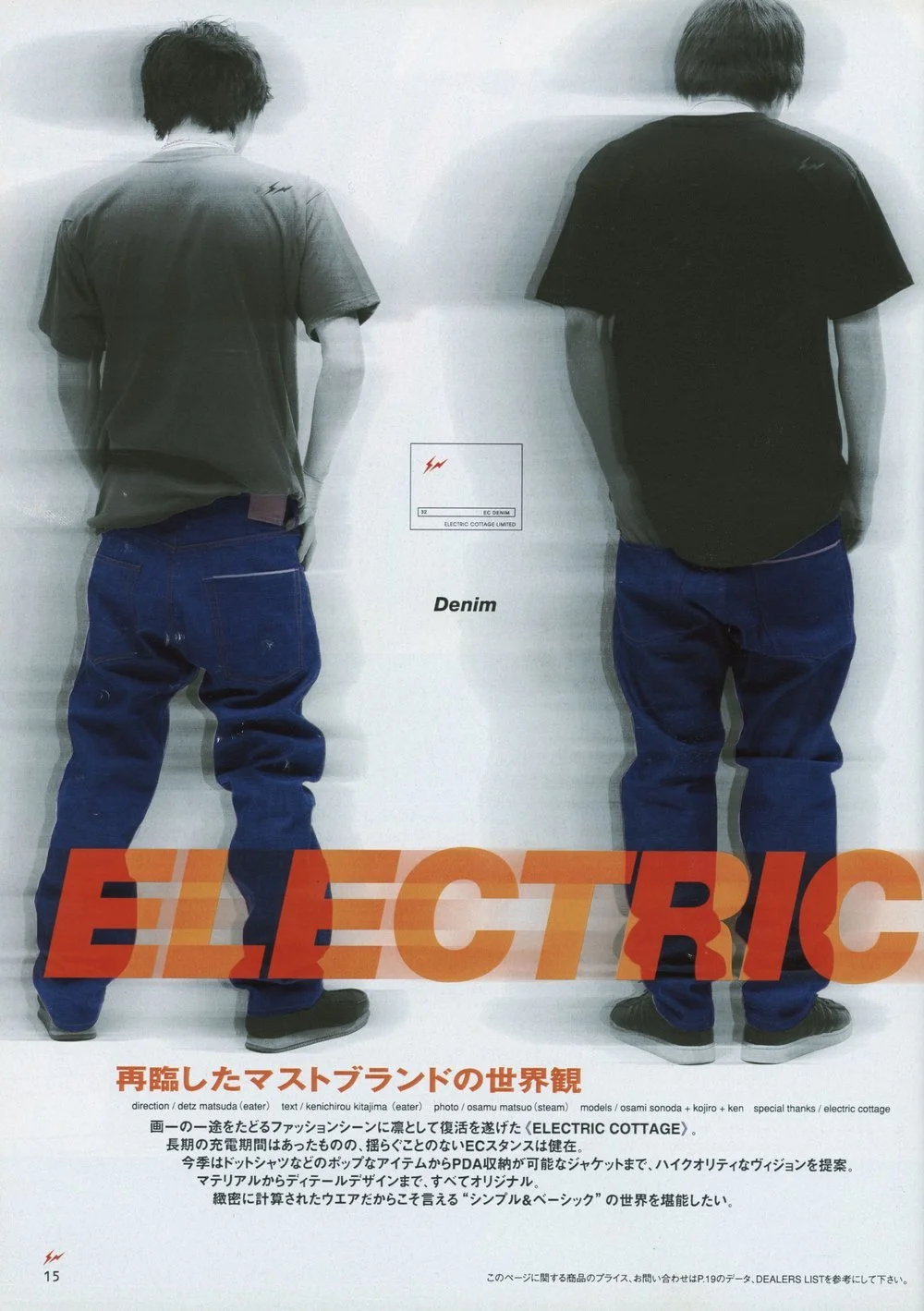
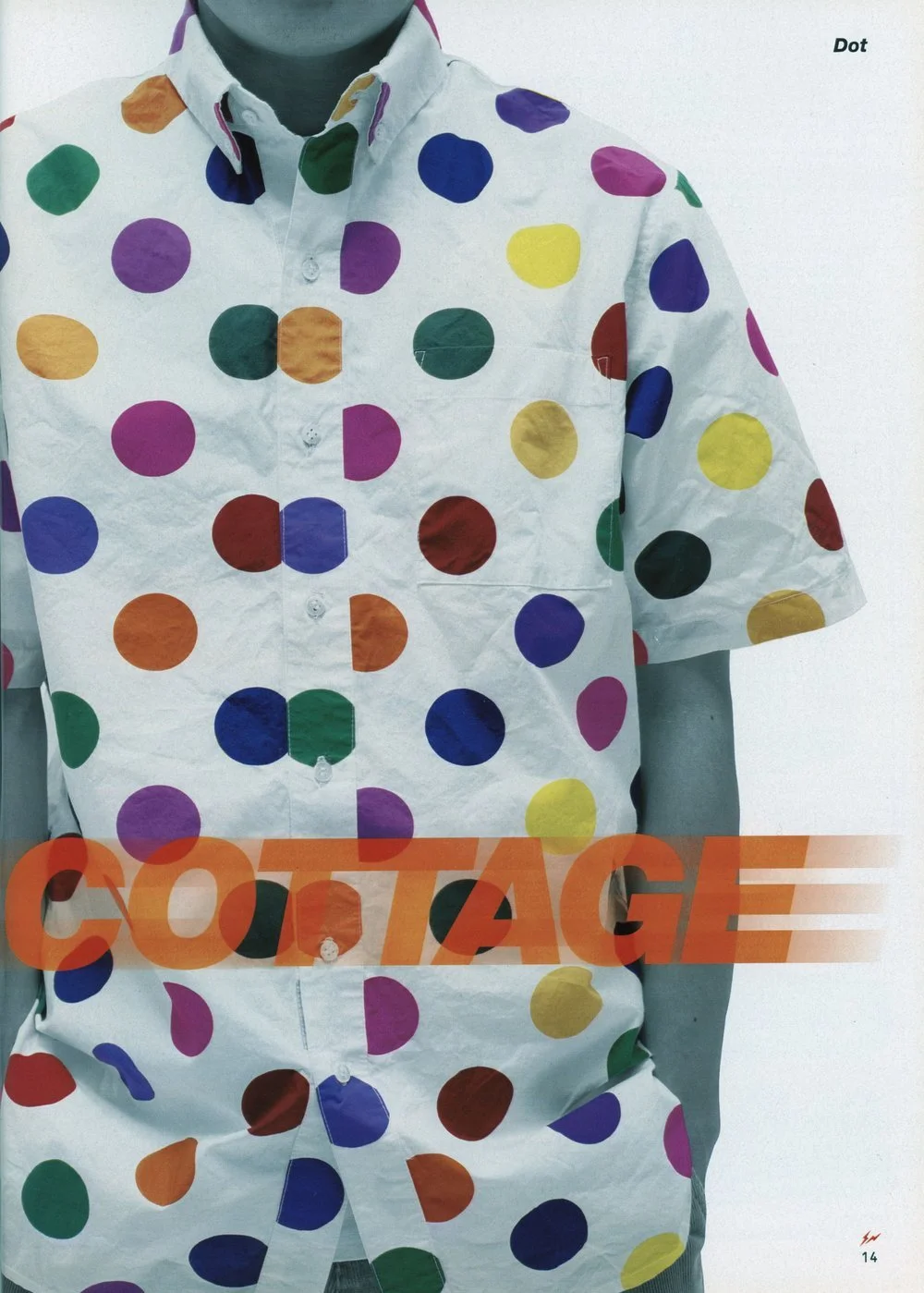
What about Electric Cottage?
Hiroshi's personal office became a brand. While working on GOODENOUGH, he rented a room in Harajuku , just behind the Omotesando Hills building, and when M&M (interior design collective that designed most legendary Urahara stores) started doing interior design, he asked them to do his private office. If I recall correctly, I remember hearing that when Shawn Stüssy visited his office, he saw the office and commented that it looked like an "electric cottage" and named it so.
ASAYAN is representative of the urahara culture. CAN YOU talk to us about the dead end column you did with toru-eye?
Iwai-kun was a sales rep for GOODENOUGH, and he loved Hiroshi and supported him from behind the scenes. We decided to do a column together on ASAYAN. Introducing our favorite things, interviewing people from overseas, and featuring things only locals of the area would know. Most of the stories were from Toru-kun because I was busy back then. We also went to the suburbs together when Hiroshi was still a DJ. There were shops that hung APE and GOODENOUGH, and he was asked to DJ there so we tagged along.





*Showing ASAYAN Scans
The first trip we made was from Los Angeles to NY, the second time from Miami to NY. American casual fashion started to become popular in the mid-90's. That was also the reason why I wanted to do something like the movie Cannonball (1976). I wanted to do something like the it, so I decided to organize a team of stores in the Urahara area, and we drove around and did some buying while planning the project. However, since we didn't have the budget for a magazine project alone, shops cooperated and while they did their buying for their shop, we asked them to buy for ASAYAN and let us take pictures. We stayed in motels for days. There was no time to relax and sleep since we had to leave right away to be on schedule and to buy. We were only able to relax at the end in New York.







In 90’s to the 2000’s there was a culture of collecting magazines. Do you have Thoughts on people abroad who are interested in this culture? What do you think about situation now being reversed - Urahara culture started from Japanese admiring western culture and now western people admiring Urahara culture?
I think it's interesting. We like and respect American culture, and people from the 70's -80’s made things, and then now people from overseas are looking at ASAYAN and BOON. I heard Pharrell and Virgil also collected magazines and used them as references.
Everyone from that era are still actively creating, including Jonio, and NIGO, who are doing shows in Paris now. I think once you’re at that point, you are thinking for the future and not so much about the past. Knowing them, I don't think they think of them selves as legends; I think they would say that they are doing the same thing from what they were doing day 1.
Photo(s) taken by IFUCKTOKYO
Can you talk about DOUBT EVERYTHING? Did you work with Hiroshi Fujiwara?
DOUBT EVERYTHING is a company I created on my own. Hiroshi offered to help me, but I declined because I wanted to try running it by myself. Of course, whenever our company produces something, Hiroshi helps us.
What’s the story behind doubt everything?
Publishing in Japan is often a hassle, so I thought it would be better to do it by myself. Of course, I would work with a major company if the conditions were right, but I think doing independent is a better fit for me. DOUBT EVERYTHING、at first, I also wondered what to do. I was thinking of doing editing mainly, and if I could do other things, I would. I wanted to do it in a casual way.
For the name, I wanted to use a word that I had always liked. People around me said why such a negative word, but it was René Descartes' word and Karl Marx's motto.
The first project after going indepedent: OUTSTANDING magazine. can you tell us a little bit more about this?
I have been snowboarding with Hiroshi since 1990, we used to go to Hokkaido every year. We also did photo shoots for Honey.com. I love snowboarding, and I thought the outdoors was becoming a booming trend, so I wanted to create a medium that combined fashion and outdoor activity, which lead to the creation of OUTSTANDING magazine.
How did Tiny Panx influence fashion and music culture? About Tiny punks, story, legacy. What was Tiny Panx for Matsuda-san?
Friends who hung out together. This is a very important factor for Urahara culture. They were the origin, and Jonio and NIGO, who admired them, created the Urahara culture and now in Paris doing shows. I think the origin is TINY PANX. The Harajuku movement started with people who saw TINY PANX and has now grown into a much larger movement. It may as well be the foundation of current fashion cultures in Japan. Of course, there are legends like Kawakubo of Comme des Garçons, Yohji, and Takeo Kikuchi, but TINY PANX had a huge impact in Japanese street culture.
At that time, it was a disco, not a club. That's where people got together. People such as Kan Takagi and Hiroshi. In your perspective, how did you see culture being created? The time when hip-hop started to become popular. Now hip-hop is huge in Japan.
Hip-hop came out in the 80's, and they were probably the first to make it big in Japan, although at the time Hiroshi said he had been listening to rap music since the 70's. It was in the 80's that hip-hop became major.
Hiroshi went to London, and around the time of the Punk boom in 76~77, the Sex Pistols really blew up, followed by post-punk and new wave, I was going to disco at Tsubaki House, and of course Hiroshi and Kan Takagi were listening to them as well. After post-punk came rap, and hip-hop. Then Malcolm Mclaren’s Duck Rock (1983) came out and hip-hop was finally widely accepted. And came Run-DMC, and the Beastie Boys.
When they came to Japan, TINY PANX were the opening act and I did a radio show with them together, as well. They knew both fashion and music so Popeye and Brutus featured them a lot. I used to hangout in London Night after, and would go to small clubs when Hiroshi would DJ.
It was a time where there were no cell phones. If When Hiroshi was going to play on a Friday night, everyone went. Tuesday was Kensho Onuki's London Night at Tsubaki House in Shinjuku.
Photo(s) taken by IFUCKTOKYO
Cisco-zaka. Any memories? I believe Tiny Panx took beAstie boys back then when they were in Japan.
Hiroshi and Kan Takagi used to go there often. Kan Takagi used to take Beastie Boys and Public Enemy’s Chuck D with him. He still keeps in touch with them all. I think it was last year? When Jungle Brothers came they partied together.
I used to go to Cisco every 2-3 days. I used to go around Cisco, then Tower Records, then HMV, and then Manhattan Records. Buying records was as important as buying clothes. I am trying to sell off my records right now, actually. I have about 600 of the 2,000 records at a store in Shimokitazawa. I can't take them with me to the other side of the world and Kan-chan says that I can listen to them digitally as much as I want to now, so I’m trying to sell my collection.
can you talk about The relevance of the record boom and sneaker boom
Vivienne Westwood and SEDITIONARIES when it was punk, New romantic (bands with makeup) with new wave, Pirates fashion with Adam and The Ants, and Bow wow with adidas jerseys. Fashion and music were very connected.
But then house came along and I got the impression that they were no longer closely connected. Before the 70's, David Bowie and others were more closely connected with fashion. In hip-hop, there were jerseys when going to clubs. Skaters also used to wear Stüssy and listened to music that went well with skating. Now there is not so much of that anymore. It would be interesting to see more of that today.
Photo(s) taken by IFUCKTOKYO
*Showing the magazine. If this reminds you of something. How old were you when you were on here?
That was when I was in my twenties, this was a program on tokyo FM in the latter half of the last orgy. Seiko Ito was the MC and Hiroshi was in charge of music. It was a weekly program where you bring topics to talk about. Good memories.
From what you’ve shared, Tiny Panx seems to be a big part of the culture.
Although the band was only active in the 80's, I think they had a big influence. TINY PANX & last orgy were the reason why we had Nigo, Jonio, and last orgy 2.
Many of today's young people don't know. How do you want them to know Tiny Panx?
I’m not a member of TINY PANX, but seeing people like Abe who collect all these old material, I think it allows you to expand your knowledge and see the culture in a wider scale. I think its always better to understand the history which applies to not only fashion but anything.
Photo(s) taken by IFUCKTOKYO
About T90S. What inspired you to create this book?
I was thinking about what to do after making the TINY PANX book, and I found Weber in Dover Street Market selling vintage t-shirt, and they had the Bruce Weber t-shirt that used to be sold in A store Robot back then. Hiroshi, Kan-chan and I all used to own that t-shirt. The t-shirt were sent from Patricia Field’s (Sex and the City stylist) select shop in NY and only Robot sold those t-shirts in Japan. Now the price has gone up and it was marked 1,000,000 yen.
I googled Weber as I was curious who was running it, and then realized it was someone I knew so I contacted one of the member and started talking which led to creating a book together. He requested we focus on vintage t-shirt that’s tied to Harajuku in the 90s as he was working with me. I said I would collect from people around me, so I called people like Hiroshi, and Sukeshin. Some people didn't want to participate, too.
As for Hiroshi’s collection, he didn’t have time to select so I was told to visit his warehouse and search through his collection. We searched through a large number of t-shirts with Hiroshi's staff and tried to find suitable for the theme. If I had more time, I might have been able to share more.Some of them didn’t end up making it on the book.
Photo(s) taken by IFUCKTOKYO
With coffee table books, there are sneakers, watches and so on, but you made a book about t-shirts, which doesn’t seem to be the norm. What were some of the things you had in mind when you were approaching the project?
Some of them were contributed by the Weber side, but most of them were collected by Hiroshi, myself, Sukeshin, Matt (one of the original members of a bathing ape), and Yoppi. I decided not to collect any more because it would become a very thick book. Also we decided not to write who owned what, because I had a feeling Hiroshi and other the members would not like that.
The impression is that the Urahara era was packed in one book.
Since they are making this book with me, it would be focused in 90's. webber had a good selection of anime and movie t-shirts, so I left the rest to them. During the process I went to Hiroshi's warehouse and saw many things for the first time. We were talking about how we had a great time looking at the collection. I also enjoyed the time I spent selecting items with Weber. There was a vintage t-shirt boom, so the time was right.
as much as it is a book about t-shirts, it's also a book about the Urahara culture you can enjoy over a cup of coffee. What do you think of the phenomenon, and the definition of “Urahara”?
I get questioned about "Uraharajuku" and often get asked, "Did you come up with this word?" and I tell them it’s not me who named it Urahara. I don't know who came up with it, and when it first became popular, I personally didn't think it was that cool. Not so much now, but when urahara was used a lot back then, I didn't like it. As for the definition of Urahara, I need time to think. I'll need another 3 hours.
For our generation, Urahara is used as a word (noun).
There were a lot of strange articles on magazines at that time where they made these relationship diagram. They used photos without permission and wrote nonsense and NIGO once got furious about it. I guess that’s why I didn’t like the word Urahara back then.
Putting the word Urahara aside, at the time I was surrounded by people like Nigo, Shinsuke Takizawa from Neighborhood, and Hectic, all of whom were friends of mine. As I have said in a past interview, we all helped each other out. It is still the same today. Help each other, not only with money. We all enjoyed having fun together. It was a good time for us.
your favorite t-shirt? top 7? or top5?
It is difficult to choose the best, it depends on the generation. Like the promo t-shirt for Kyoko Koizumi’s solo album “Seventeen" produced by Hiroshi. Hiroshi asked Shawn to design, and it was not even for sale. Hiroshi Fujiwara, Kyoko Koizumi, and Shawn Stüssy, a collaboration of three amazingly talented people. I still have fond memories of this t-shirt. And Hiroshi still had it in the warehouse too.
I auctioned off a t-shirt of a movie called "Drugstore Cowboy (19890". It was a t-shirt by a club called Gold, where they did the promo of the movie. Gold was the club that everyone went in Shibaura. Legendary club. One of the best clubs when house music just landed in Japan - a huge Shibaura warehouse. GOODENOUGH t-shirts, Popular, iconic t-shirt that I like not shown here, oh, and Bruce Webber's t-shirt. The memory of buying this t-shirt at Robot, one of the top 5 t-shirts ever made.
Photo(s) taken by IFUCKTOKYO
how did you curate the list of t-shirts?
Somehow. It’s just the feeling. I've been decluttering a lot of toys as well. Not the ones displayed here in the office, but the ones I bought in the U.S.
Last question - for people who are not familiar with Detz-san, could you talk about your future project and if there’s any advice for the younger generation?
There are two projects we’re working on but can’t disclose yet. Also, one book is not related to fashion— it’s something to do with fetishism.
As for the advice, few months ago Kan-chan, Hiroshi, and I were talking that we shouldn’t deny nor judge what young people are doing. Let them freely create what they think is good, and not be so harsh. So, do what you want, I guess.
Interview and words by Abe Selassie
Photos by IFUCKTOKYO

